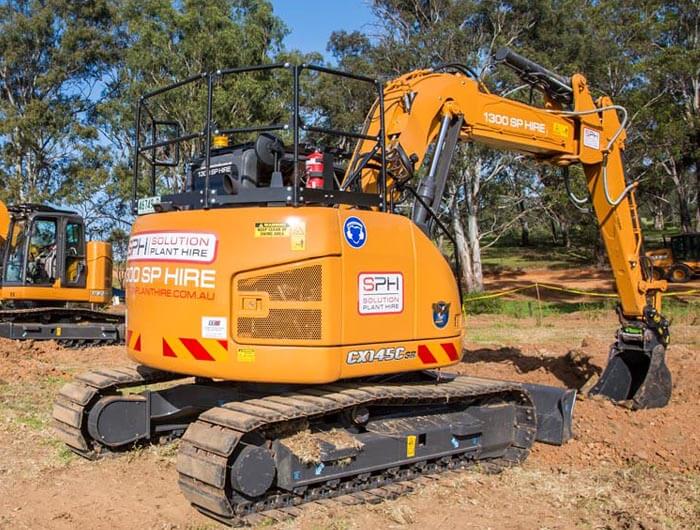We get it – when you’re using heavy machinery in a project, you’re on the clock. But you must also know that taking a couple of minutes to check your machines every day is essential. When you want to prevent unnecessary wear, damage, and injury, setting aside time for those simple pre-start and end-of-day checks is imperative.

Tips for a pre-start excavator checklist
Depending on which excavator you hire, your excavator and its parts may vary. Nonetheless, the basics of a pre-start excavator checklist are always the same.
First, make sure you start and end at the same point every day. For example, if you begin your excavator checklist inspection in front of the cab, you should end it there, too. This leaves you sure you’ve covered everywhere.
This leads to our next point. Look up and down, left and right. Open and lift everything that can be opened or lifted and leave no stone unturned. Check every area, from the least obvious to the external.
And lastly, document and provide evidence of your findings, even when they are probably all clear most of the time. Have a pre-start excavator checklist and tick off every part after you inspect it.
Get in contact with us if you need any more information.
What should be on my pre-start excavator checklist?
Before you even start making your pre-start excavator guide, giving your operators some excavator walkaround guidelines is a good idea.
Step 1 is to perform a basic visual inspection of the machine. Walk around your excavator and look for leaking or damaged components. Then, take a more detailed look. Inspect the boom and arm for cracks. This is especially prudent if you work in harsh conditions or a cold climate.
Your excavator guide
Here are the parts you should include in your daily excavator checklist:
- Arm and cylinder mounting
- Bucket and cylinder mounting
- Boom and cylinder mounting – damage or leaks
- Battery compartment
- Main pump compartment
- Track drive
- Swing drive and main control valve
- Track chain and shoes – check the track pads for loose bolts and damage, as well as check the track chain for frozen links
- Inspect for superstructure damage
- Look out for lower frame damage
- Cowl frames and side doors
What should my daily pre-start excavator checklist checks be?
Before you start your day, here are some good things to have in your daily pre-start excavator guide:
- Check your cab air filter. Found behind your cab, the cab’s air filter needs to be checked often, particularly if you work in a dusty environment.
- Also found behind your cab, you should check the engine air filter and the electrical box. Drain the system if it shows “full water separator”.
- Look for leaks in the hydraulic line – you don’t want a severe leakage or heat in the system.
- Check the coolers and radiators for clogging or damage. Clogged coolers could lead to poor performance or overheating.
- Check that safety gear like mirrors, seatbelts, cameras, and the safety lever is clean and fully operational.
- Examine all pipes, hoses, and hydraulic connections for external damage.
- Check the engine oil level. You can do this in the cab by looking at the display on the day-to-day. However, if you want to do it the traditional way, or if your excavator is still new, open up the two latches and engine hood – it has a self-locking upper position. Then, check the oil with a dipstick. Be sure to use a paper towel or cloth to avoid dipstick contamination.
- Check the bucket linkage and remove dirt or small rock pieces.
- And lastly, turn on the main battery switch before you get into the cab. This prevents shock when you check other areas of the excavator.
What about the end-of-day excavator checklist?
Don’t think your work is done because you’ve thoroughly checked your excavator at the start of the day! However, for your safety and the excavator’s longevity, there are more things to keep an eye on in your end-of-day excavator guide:
- When you are leaving your excavator unattended, disconnect the main battery switch. This prevents theft and the battery from running down.
- To reduce the risk of condensation in the tank overnight, fill your excavator up with fuel at the end of the shift. Top up your AdBlue®, too.
- To protect the piston rods, park your excavator with the digging equipment completely extended.
- You should also clean the undercarriage. This reduces the strain on the components, mainly during winter. If you don’t, you may be unable to move the excavator the next day due to the mud in the chain freezing. So, clean your undercarriage to avoid an expensive repair.
And that’s everything! Your excavator may be somewhat different, so be sure to check your operator’s manual for everything you need to do, maintenance-wise.
Need dry hire excavators? Get in contact with us if you need any more information.